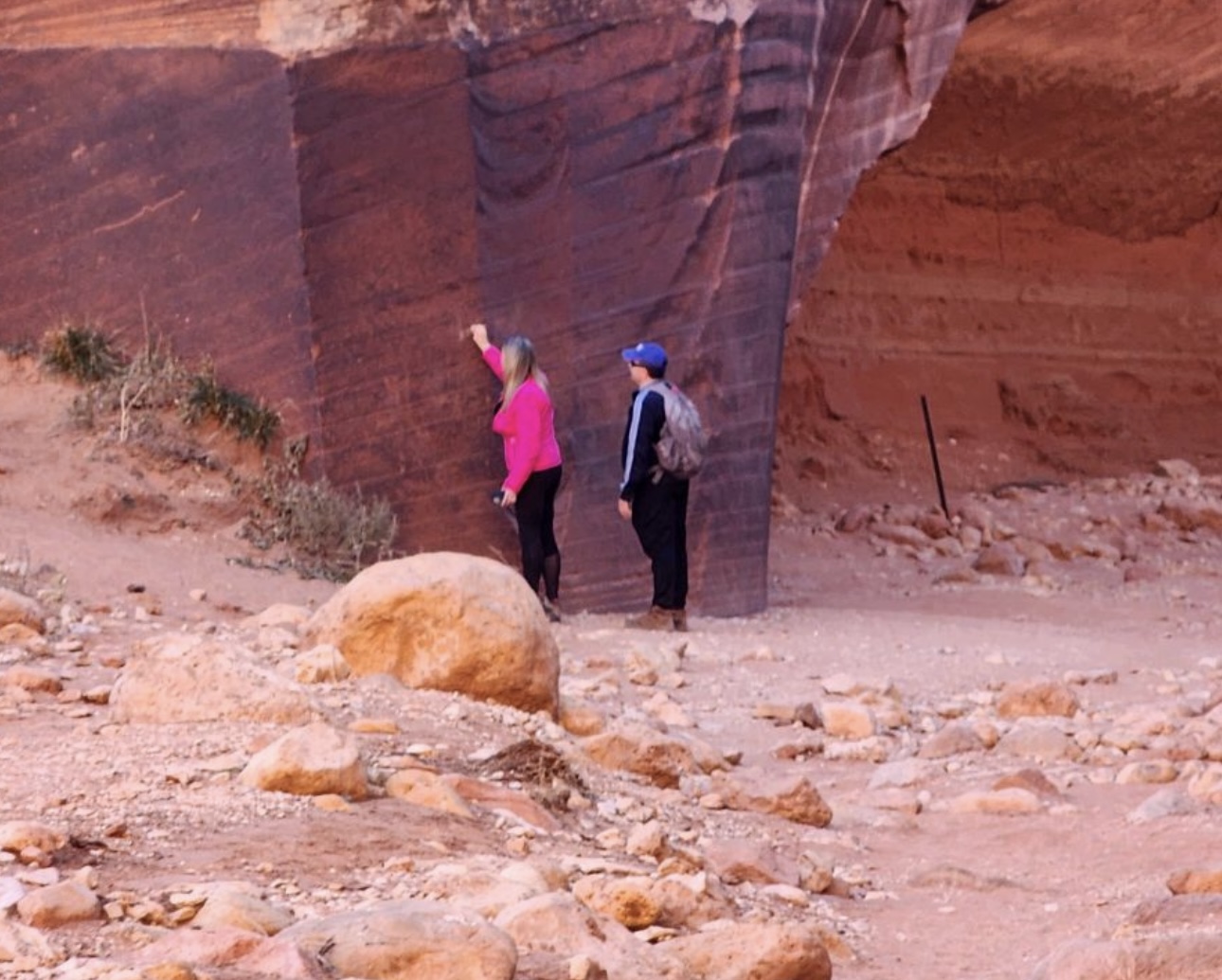Some information may be outdated.
“We’d be better off with no snow right now,” said Eric Trenbeath, an avalanche forecaster for the U.S. Forest Service Utah Avalanche Center. Trenbeath filmed an Instagram video on Nov. 20 describing current conditions in the La Sal Mountains outside of Moab.
Instagram is just one of the many venues the Utah Avalanche Center uses to reach out to backcountry users with up-to-date snow reports, educational opportunities and other information as the group expects a winter of unfavorable conditions and new backcountry users.
This week is the second annual Avalanche Awareness Week in Utah, which focuses on promoting snow science education and backcountry safety. Avalanche awareness could be especially important this year, as due to the COVID-19 pandemic many ski resorts will only open in limited capacities, potentially sending skiers, snowboarders, and other backcountry users into avalanche terrain.
A La Niña winter
As early as September of this year, the National Oceanic and Atmospheric Administration climate blog announced that “La Ninã is here!”
The weather pattern referred to as La Niña, as opposed to the weather pattern El Niño, typically affects the southwestern United States by producing a drier, and in this case warmer, than average winter. La Niña winters create tricky snow conditions, in addition to worsening the state’s long drought.
“We are not off to a great start,” Trenbeath said, describing just enough snow on the ground in the La Sals to start forming “problematic weak layers.”
“Shallow snowpacks are weak snowpacks,” said Trenbeath to the Moab Sun News, “and long periods of high pressure weaken the snowpack further.”
Southern Utah will likely see more high pressure in the coming months, with more sunny days and warmer temperatures. The National Oceanic and Atmospheric Administration predicts a 40-50% chance of warmer-than-average temperatures for much of Utah, and roughly 30% chance of drier than average conditions for this winter.
A “weak, sugary layer of snow” early in the season can be covered by later snowfall, forming an unstable base for the snowpack, Trenbeath explained.
“It is something we will likely be contending with for much of the season,” he said. “It’s kind of like adding straw to the camel’s back and seeing how much it will take before it breaks.”
While sunny and clear conditions are pleasant for winter recreation, they can wreak havoc with snow conditions.
Moab’s expected winter of sunny stretches punctuated by infrequent snowstorms likely will add up to slide-prone slopes this winter if more snow loads on top of the weak layers. Experts worry that these tricky snow conditions can spell trouble, as more folks are headed outdoors for recreation this winter.
Emptier resorts and a crowded backcountry
Due to the COVID-19 pandemic, many of Utah’s famous ski resorts like Alta, Snowbird and Park City Mountain Resort have decided to reduce crowding by requiring reservations or limiting ski lift access. Land managers, avalanche forecasters, and retail companies all say they expect people pushed out of traditional resorts to head to the backcountry instead.
Not all of these users, experts are concerned, will be experienced in navigating dangers and keeping an eye out for avalanches.
“Since last April, we’ve seen an increase in backcountry users,” said Nikki Champion, a USFS forecaster for the Utah Avalanche Center. “We’re expecting to see an increase in backcountry users this year, as well as an increase in new users, including non-traditional users. So we’re kind of nervous about making sure that we get our information out to those who don’t know that we exist.”
This winter, the Utah Avalanche Center has focused on expanding its outreach to reach new users. In addition to daily forecasts for nine different zones across Utah, the Utah Avalanche Center created Know Before You Go, a free online avalanche education course for the public at KBYG.org.
“We’re [also] doing a Trailhead Awareness Program, [where we’ll] actually have some folks at trailheads trying to reach these new users who might be going out for the first time, just boot-packing or sit-skiing or fat biking,” said Champion.
The Center also plans to offer its yearly field classes for snow safety education, without the indoor classroom part due to COVID-19.
While around 40% of avalanche fatalities happen to skiers and snowboarders, they aren’t the only user group at risk. Hikers, climbers, snowmobiles, even bicyclists riding on fat bikes can be at risk of triggering an avalanche depending on the terrain they travel on and the slopes above them. Avalanches aren’t random: dangerous terrain and conditions are recognizable, provided the right training and education.
“Get educated about avalanches. Carry an avalanche beacon, probe, and shovel and practice using them. Realize that avalanches are not just a random occurrence,” Trenbeath urged backcountry users.
Over 90% of avalanche accidents occur when the victim or somebody in their party triggers a slide. Most avalanches happen on slopes between 30 and 45 degrees, which is about the steepness of a Black Diamond run at a ski resort.
“Learn how terrain, weather, and the snowpack influence avalanche danger,” Trenbeath said. “All of the terrain above the treeline in the La Sals fits this description, as does much of the terrain below.”
People in the Moab area can access the regional snow report, see the Geyser Pass plowing scheduling and more info on the Utah Avalanche Center website at www.utahavalanchecenter.org/forecast/moab
“Land managers, avalanche forecasters, and retail companies all say they expect people pushed out of traditional resorts to head to the backcountry instead.”
Appreciate the coverage? Help keep local news alive.
Chip in to support the Moab Sun News.




